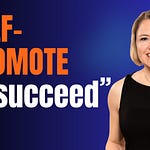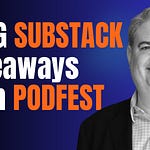Of course, this podcast does have a video version and you can watch it here.
As someone who spent over a decade on-air in radio, I’ve always considered the listener first, even in video content, knowing that viewing is often optional.
The real value in most talk shows—including video podcasts and livestreams—is in what we hear. That’s why audio remains my top technical priority. Audio has a unique intimacy that’s hard to replicate.
But as the media landscape shifts, we must acknowledge the reality: video creates a next-level opportunity to engage and grow.
1. Adding Video Doesn’t Have to Be Difficult
Incorporating video can be as simple as turning on a webcam. If you’re recording remotely with a guest, just ask them to do the same. Many podcast recording platforms now come with built-in video options, so using video might be easier than you think.
The truth is, audiences want to see you—especially on platforms like YouTube, where an audiogram alone doesn’t cut it. People are drawn to seeing your expressions and reactions as you deliver your content. They’re less concerned with a flawless set or high-end camera and more interested in connecting with you.
2. Video is a Powerful Social Media Tool for Audience Growth
Video is the ultimate scroll-stopper on social media. Even if you’re not ready to post full video episodes, recording yourself while podcasting gives you valuable clips to share across visual platforms like Instagram and YouTube.
These clips help you attract attention by offering a quick, engaging look at your content. They can also lead viewers to explore your full episodes, helping you build a dedicated following over time.
3. Video is the Key to Branding Your Podcast and Showcasing Your Expertise
Beyond reach, video serves as a powerful branding tool. Traditional podcast apps offer limited discoverability, but YouTube—quickly becoming the place for podcasts—boasts excellent discovery through its search engine and suggested video features. Plus, your video content can rank in Google search results, boosting your visibility even beyond YouTube. This positions you as a go-to source on your topics and helps your brand connect with audiences wherever they’re searching.
In addition, repurposed video clips on social media visually reinforce your identity and expertise, even for those who don’t tune in to the full episode. This positions you as a knowledgeable voice, making a memorable impression that sticks with viewers and builds your reputation.
4. Video Enhances Your Ability to Monetize
Video opens up new opportunities for monetizing your podcast. With the potential to reach more people on YouTube and other video platforms, you can grow your audience while increasing the numbers you report to sponsors, including video views across social media.
The YouTube culture also aligns perfectly with monetization; viewers are accustomed to seeing links in video descriptions for related products and services, making it easy to integrate affiliate links or sponsored content.
Video allows you to showcase a product visually, so potential customers don’t just hear about it—they can see it in action, which adds credibility and impact to your endorsement.
Why Stay on the Sidelines?
Every day your podcast remains audio-only is a missed opportunity to grow your reach, connect more deeply with your audience, and explore new monetization avenues. While there are valid reasons for some creators to stick with audio-only (and
and I discuss these in Video Podcasting Made Easy), for most podcasters, staying away from video makes little sense. Video podcasting may seem intimidating, but it doesn’t need to be. And it’s one of the most powerful tools available for expanding your show’s impact.So, what’s holding you back? Are there specific concerns about video podcasting that make you hesitate? Drop a comment below or reply to this newsletter—I’d love to hear your thoughts and help you take that first step.












Share this post